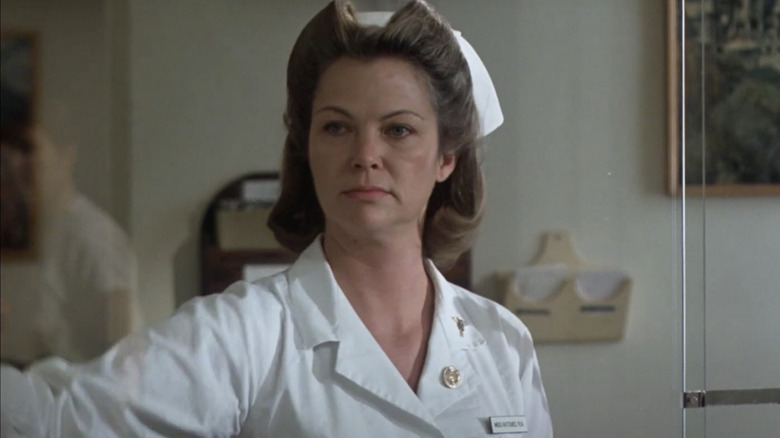In Ken Kesey’s seminal work, “One Flew Over the Cuckoo’s Nest,” the setting of the mental institution plays a pivotal role in shaping the characters and the unfolding drama. Nurse Ratched’s iron-fisted rule and the oppressive atmosphere within the ward serve as a microcosm of the suffocating society outside its walls, while the arrival of Randle McMurphy, a charismatic and rebellious inmate, sparks a spark of defiance in the patients and challenges the boundaries of the institution.

Image: www.slashfilm.com
The Institution: A Bastion of Conformity and Oppression
The mental institution in “One Flew Over the Cuckoo’s Nest” is an emblem of an oppressive system that seeks to suppress individuality and impose conformity. Nurse Ratched reigns over the ward with a cold and calculated hand, administering precise doses of medication, maintaining a strict schedule, and instilling fear in the patients. The ward becomes a symbol of the dehumanizing tactics used to control and marginalize those who deviate from societal norms.
Kesey paints a vivid picture of the ward, describing its cold, sterile walls, the impersonal lighting, and the constant buzz of fluorescent lamps. The patients are reduced to mere figures, their individuality stripped away by the institution’s systematic efforts to homogenize and control. The ward’s oppressive atmosphere permeates every aspect of the patients’ lives, suffocating their spirits and extinguishing their hope.
The Patients: Unheard Voices Trapped in a Living Nightmare
The patients in “One Flew Over the Cuckoo’s Nest” represent the marginalized and forgotten members of society – individuals who have been silenced and outcast due to their perceived mental illnesses. Kesey brings their voices to the forefront, exposing the injustices and indignities they endure within the confines of the institution.
Chief Bromden, a Native American whose spirit has been broken by years of oppression, serves as both the narrator and a representation of the silenced voices of the patients. Harding, a timid and withdrawn young man, has been labeled homosexual and is subjected to relentless mockery and abuse. Billy Bibbit, a shy and insecure stutterer, bears the weight of his mother’s expectations, which crush his spirit and drive him to a tragic end.
Randle McMurphy: A Catalyst for Rebellion
The arrival of Randle McMurphy, a rebellious and charismatic inmate, upends the delicate balance within the ward. McMurphy challenges Nurse Ratched’s authority at every turn, sparking a sense of defiance in the patients and setting in motion a series of events that will ultimately expose the institution’s brutality and hypocrisy.
McMurphy brings with him a breath of fresh air, challenging the oppressive norms within the institution and encouraging the patients to embrace their individuality. His infectious spirit inspires them to question their own beliefs, to demand their rights, and to fight for their dignity. McMurphy’s presence serves as a catalyst for rebellion, uniting the patients in their struggle against Nurse Ratched’s tyrannical reign.

Image: www.onlinepsychologydegree.info
One Flew Over The Cuckoo’S Nest Setting
The Conflict Between Oppression and Freedom
“One Flew Over the Cuckoo’s Nest” explores the fundamental conflict between the oppressive forces that seek to stifle individuality and the innate human desire for freedom. The mental institution becomes a battlefield where these opposing forces clash, with the patients and their rebellion representing the struggle for autonomy and self-expression.
Throughout the novel, Kesey expertly depicts the ways in which the institution enforces conformity, robs the patients of their dignity, and ultimately suppresses their potential. However, he also celebrates the resilience of the patients, their ability to resist oppression, and their unwavering determination to reclaim their individuality.
In the end, the mental institution becomes both a prison and a crucible, a place where the characters are forced to confront their own inner demons and the oppressive forces that seek to control them. Through their struggles, they ultimately find strength and liberation within themselves.
